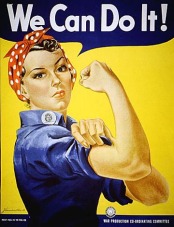Research Project Cont’d
1. The arguement that I am making about jeans is that their value has changed over time. It used to be that jeans were worn as a sturdy pant that would hold up in treacherous conditions such as mining and things of that nature. But now you can look in any fashion magazine and see that wearing jeans with a sweater or jeans with a sport coat can be fashionable and hip. And refering to their actual value, jeans used to be cheap but now you can spend $100 on a pair of jeans because of the designer that made them. They used to be a symbol of what class you belonged to. If you wore jeans you were lower or middle working class and if you were above that you wore slacks. But now you can come across some of the hottest actors and actresses in a pair of jeans.
2. I expect to learn a lot about the history of the blue jeans as we know them today. Levi was the first to make many advancements in the jean industry such as putting the rivets on jeans for more strength. They are also responsible for the first de-segregated factories as well as the first jeans for women. As a matter of fact Levi desegregated before The jeans first started becoming “fashionable” in the 50’s when they were used in movies and TV shows to give the character a rebellious and “bad boy” role. In 1966, Rock-and-Roll groups recorded radio commercials for Stretch Levis and White Levis. I expect to continue to find more and more connections between Levi and the fashion market.
3. The main source of information that I have used this far is a timeline that I found on the Levi Strauss & Co. website. It has given me all of the information that I just gave in question #2. I haven’t really read anything else but I have looked through magazines to find good examples of popular people wearing jeans.
4. I still need to look at some of Levi’s competition to see if there is anything that has to do with jeans that Levi did not invent. I would also like to consult some really old catalogues that you could buy jeans from to see how drastic the change of price is. I guess one thing I’m not clear on is what the goal of the research is. Should I just be trying to find as much as I can to support my arguement? And am I using this research to inform just the class? or perhaps the World?
The “Banking” Concept of Education
1. “Problem-posing education is revolutionary futurity.” In an English class (like the one we are in) the teacher would have us read short essays about how certain individuals feel. After that we would reflect upon what we read and discuss, not only with each other but also with the teacher, and share ideas. Therefore everyone teaches everyone else because none of us know everything. I don’t think that I’ve ever been in a history class like this. It seems like history is already written and the only thing left for arguement is why something happened but the fact that it happened will remain and cannot be denied. Math is much like history. It has already been done by someone else so you just use the existing theorums and laws to do the math at hand. Teachers can be expected to learn all kinds of things from their students. Anything from new ways to think about things to what’s the latest trends. Just this morning one of my classmates was showing my Calculus teacher how to use an iPod.
2. The use of the term “praxis” refers to our creativity, transformation, and knowledge. He says, “For apart from inquiry, apart from the praxis, individuals cannot be truly human.” Without our ability to be creative, to transform, and to know we are merely animals in this world. In the education system today we are removed from our “praxis” and are forced to sit there and be “filled” with all of the teacher’s knowledge.
3. Freire seems kind of prejudiced against the education system as we know it today. And in talking about making deposits in a bank, he is really depositing this idea into a bank. While I read this, I never felt like I would be able to get a word in with him.
Research Project Follow-up
As I said before, I will do my project on Levi jeans. It is important, I believe, because jeans have got to be the most common kind of pants. Everyone has them. I expect to discover a lot of sexual advertising like we have been discussing in class as well as very important historical information about them. The value of jeans has changed drastically over the years. Before, they could be considered as strictly work pants. Today, they might still be considered that but I have also seen people wear jeans with a sport coat and all of the sudden they are dress pants. This historical change in value will prove to be fascinating. Some of the sources I intend to consult are the actual Levi website, adflip.com, and other sources like perhaps Levi’s competition.
Advertising Assignment
I think I will do my “project” or whatever it is considered to be on Levi jeans. I know that advertising for jeans has changed alot over the years and I think it would be an interesting product to see the evolution of its advertising. Another reason why I think I want use jeans is because I just like jeans. They are great.
A Second Reading: Beauty (Re)discovers the Male Body
1. In this 45 page essay, Susan Bordo really drives her points home. This is very effective in a way to help people understand. She comes at the reader from a few different angles on each point to really help you grasp what she is trying to say. Also by using graphics helps visualize what she is talking about. By using very good, descriptive words, she controls the pace of the essay. It makes us slow down and think about what she is saying. She also has 27 sources listed in her bibliography. She really did her research before she wrote this essay which gave her many viewpoint and a whole lot to talk about. She also breaks the essay into sections. This helps her organize her ideas and gives her reason to just keep talking about stuff.
2. As I mentioned before, her subsections allow her to organize her thoughts, say what she needs to say without rushing, and also control the pace of the reading. They also help her develop her essay and tell it in order. First she talks about the history of using the naked or half-naked male body in advertising. Then she gives us an example of one designer and his story. Then she differentiates between the different ways to use the male body, whether it be the “stare down” effect or the self-conscience one.
3. In her essay, Bordo discusses the “gaze” of another and how people can be defined by it. It gives a person a sense of self-worth when they are approved by someone else. And also, “getting caught in moments of fantasy or vanity may be especially shameful.” Your position changes as soon as you get the “Look” of another. “It isn’t until those other eyes are upon you that you truly feel not just the ‘wrongness’ of what you are doing, but … the very fact that you are doing it.”
Deconstructing Ads
In the first ad, Kotex attempts to sell its product by suggesting that it is the polite and proper thing to use. This sort of ad could never be used in today’s world of advertising. Now-a-days the ad would have to get our attention by using an eye-catching image or phrase, like in the second one. It uses a picture of a good-looking woman and uses short sentence fragments to sell the feminine napkins. In this day and age its all about the first impression. I can honestly say that I wouldn’t even think about reading the first ad not only because I’m not interested in buying feminine hygene products, but also because I really don’t want to read all of those words.
Narcissism and Liberation
All of the women shown in these pictures are represented completely differently than Douglass’ interpretation of women in the media today. These women aren’t advertising their bodies to sell a product or anything. They are displaying their ability to do the same things as men. The first picture is of a woman in the military. She is obviously not about to show herself off to sell the army. The second picture is a classic. This image was used during the war when the men left and women had to work the factories and do the “men’s jobs.” The third image is a picture of a couple of women studying. Obviously images of women can be used without being sexual. They can be used to show that women “Can Do It” just like men.
Ways of Seeing: A Second Reading
1. I think Berger’s use of the word “history” is significant in this essay. I believe it stands for a sort of bank of information that we use to come to conclusions about present day questions, problems, and ideas. I think we can use this to look at pictures by looking back at the history of the picture and knowing the background and the feelings that people had about that picture.
2. I dont really understand what is going on in the reading while Berger is discussing Hals’ painting. I’m not really familiar with this and I’m not sure if I understand the “mystification.”
A Second Reading
1. I’ll have to say that I didn’t recognize any real progress of thought. It seemed like Percy gave a central idea and built around that with different examples. In the case of the tourists at the Grand Canyon the idea was to recover the beauty of the canyon and to feel what it is like to discover this great thing as if you were the first to see it. With that he gives four examples or ways to go about recovering this feeling. In the example of the student disecting a dogfish in lab or reading Shakespeare and being compared to someone who randomly stumbles upon both, he tells about how the individual who finds these things in “the wild” so to speak, will learn a great amount more than the student. Percy says that the way the information is presented to the student, in its “educational package,” make it harder to learn from it. The student is almost forced to learn what they are supposed to learn without exploring outside of the cirriculum. These examples are much different than the recovering of the Grand Canyon but the idea of discovery remains important in each circumstance.
2. The talk of loss in this essay is important and I think it’s Percy’s main point that he is trying to make. The loss of the creature does exist in the case of the Grand Canyon. There is definitely something missing when you go through the system: the tour, the cameras, the “beaten track.” But Cardenas had “it,” whatever “it” is, and thats wut made the creature his and only his. The sight of the Grand Canyon was probably so breathtaking that he would not have been able to say “I claim this for my queen” or any of those cliche things that they say in the movies. He says in the essay that we lose our sovereignty to the experts, the ones we trust to tell us if what we experienced was genuine. We sacrifice sovereignty on purpose, so that we don’t know what we want to know, giving us a sense of ignorance and dependence on those “experts.”
The Loss of the Creature
I really enjoyed this essay and it really “got the wheels turning” so to speak about alot of different issues. First of all, I respect the idea that no one can learn to appreciate things after they have already been found. A question I have on this though is now that the Grand Canyon is found and treated as a tourist attraction, will it ever have the value that it once did? Is there any way that a tourist or visitor, who already knows the Grand Canyon is there, can “discover” it and see it as Garcia Lopez de Cardenas did? I also like the way Percy describes the “educational package.” It definitely explains why sometimes I just don’t get things in labs or when reading from a text book. I had trouble reading at a couple of points in the story but especially this sentence: “Their consciousness of the corn dance cannot escape their consciousness of their consciousness, so that with the onset of the first direct enjoyment, their higher consciousness pounces and certifies…” I’m pretty confused about that statement. This whole essay seems to be about cliche`. It is saying that people for example, go to the Grand Canyon not to discover it, but because a million people before them have done it and now it is unoriginal and not creative. At one point though, when Garcia Lopez de Cardenas first found it, the canyon was extremely powerful and creative because it was his and no one elses.


